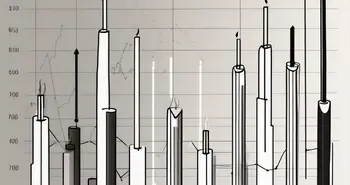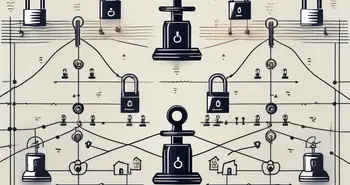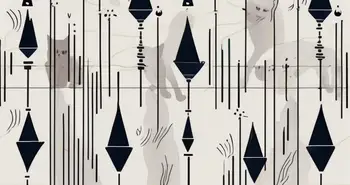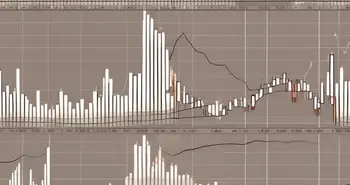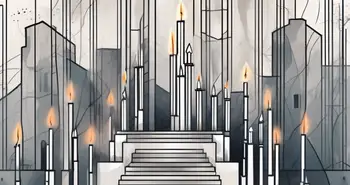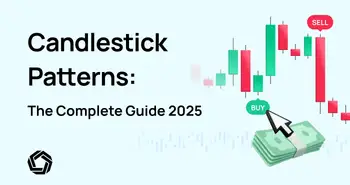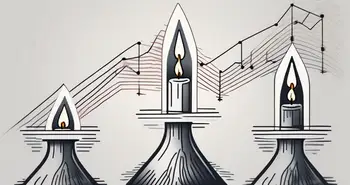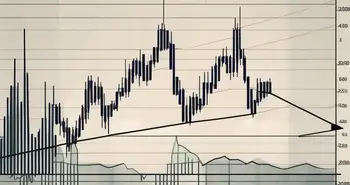A Guide for Single Candlestick Patterns

Candlestick patterns have been a vital tool in the world of trading for centuries. Whether you're a seasoned trader or just starting out, understanding these patterns can greatly enhance your ability to predict market trends and make profitable trades. In this comprehensive guide, I will take you through the basics of candlestick patterns, delve into the various types of single candlestick patterns, show you how to interpret them, and provide you with strategies for incorporating them into your trading routine.
Understanding the Basics of Candlestick Patterns
Before diving into the intricacies of single candlestick patterns, it's essential to grasp the underlying concepts. Candlestick patterns originated in Japan in the 17th century and were used to analyze the price movement of rice contracts. These patterns became popular among traders worldwide due to their ability to provide valuable insights into market sentiment.
One of the key reasons candlestick patterns are widely used is their ability to convey vast amounts of information in a visually appealing way. Unlike traditional bar charts, which only show the opening and closing prices, candlestick charts include additional details such as the high and low of a given timeframe.
The Origin and History of Candlestick Patterns
As mentioned earlier, candlestick patterns have their roots in Japan. However, credit goes to a Japanese rice trader named Munehisa Homma for refining and popularizing their use. Homma's expertise in recognizing market trends enabled him to accumulate substantial wealth, making him a legendary figure among traders of his time.
Centuries later, candlestick patterns gained global attention thanks to the efforts of renowned technical analyst Steve Nison. Nison, through his extensive research and writings, introduced these powerful charting tools to the Western world.
The Importance of Candlestick Patterns in Trading
Why are candlestick patterns so important in trading? The answer lies in their ability to provide deep insights into market psychology. Each candlestick represents a specific timeframe, be it a minute, hour, or day, and paints a picture of the battle between buyers and sellers during that period.
By understanding the formations and patterns that candlesticks create, traders can decipher market trends, identify potential reversals, and make informed trading decisions. Being able to read and interpret these patterns accurately is a crucial skill that every trader should strive to master.
Decoding the Anatomy of a Candlestick Pattern
Before exploring the different types of single candlestick patterns, let's break down the anatomy of a typical candlestick. A candlestick consists of two main components: the body and the wick (or shadow).
The body represents the price range between the candle's opening and closing prices. If the closing price is higher than the opening price, the body is typically filled or colored, indicating a bullish signal. Conversely, if the closing price is lower than the opening price, the body is usually empty or colored differently, indicating a bearish signal.
The wick, on the other hand, represents the price extremes during the specified timeframe, showing both the highest and lowest prices. The upper wick represents the high, while the lower wick represents the low.
Types of Single Candlestick Patterns
Now that we have a solid understanding of the basics, let's explore the various types of single candlestick patterns and their significance in trading.
The Doji: A Sign of Indecision
The Doji is one of the most common and recognizable single candlestick patterns. It forms when the opening and closing prices are virtually the same, resulting in a small or nonexistent body and a long wick.
A Doji indicates a state of indecision in the market, where buyers and sellers are relatively equal in strength. It suggests a potential reversal or a temporary pause in the prevailing trend. Traders often look for confirmation from subsequent candlesticks before making any trading decisions.
The Hammer and Hanging Man: Reversal Patterns
The Hammer and Hanging Man candlestick patterns are potent reversal signals that traders should pay close attention to.
The Hammer forms at the bottom of a downtrend, characterized by a small body located near the high of the candlestick and a long lower wick. It signifies a potential bullish reversal, indicating that buyers are starting to gain control and the downtrend may be ending.
Conversely, the Hanging Man appears at the top of an uptrend, featuring a small body near the low of the candlestick and a long upper wick. It suggests a possible bearish reversal, indicating that sellers may be gaining strength and the uptrend could be coming to an end.
The Spinning Top: Uncertainty and Volatility
The Spinning Top is a candlestick pattern that signals uncertainty and potential market indecision. It is characterized by a small body with wicks extending from both ends.
This pattern represents a tug of war between buyers and sellers, with neither side gaining a clear advantage. It indicates a potential pause in the prevailing trend and often precedes significant price movements. Traders need to exercise caution when interpreting this pattern and look for confirmation from subsequent candlesticks.
Interpreting Single Candlestick Patterns
Now that we have covered the different types of single candlestick patterns, let's discuss how to interpret them effectively to maximize trading opportunities.
Identifying Bullish and Bearish Signals
When analyzing candlestick patterns, it's crucial to determine whether they signify a bullish or bearish signal. A bullish signal suggests that buyers are in control and price may increase, while a bearish signal indicates that sellers have the upper hand and price may decline.
To identify bullish signals, look for candlesticks with a filled or colored body, indicating that the closing price is higher than the opening price. Conversely, bearish signals are characterized by candlesticks with empty or differently colored bodies, suggesting that the closing price is lower than the opening price.
Understanding the Significance of Shadows and Bodies
Both the shadows and bodies of candlesticks provide valuable insights into market sentiment.
Long shadows indicate significant price rejections at the high or low of a candlestick and can signal potential reversals. Short shadows, on the other hand, suggest that the price has remained relatively stable during that timeframe.
The size of the body can also offer insights into market dynamics. A larger body signifies greater volatility, while a smaller body suggests increased stability and potentially indecisiveness among traders. Traders should consider the size of both the shadows and bodies when interpreting candlestick patterns.
The Role of Color in Candlestick Patterns
The choice of colors for candlestick bodies can have an impact on how traders interpret patterns. While there are various color schemes used, the most common convention is to color bullish candlestick bodies green and bearish bodies red. This color differentiation enhances visual clarity and makes it easier to identify the prevailing market sentiment at a glance.
Strategies for Trading with Single Candlestick Patterns
Now that we have covered the essentials of candlestick patterns and how to interpret them, let's explore some effective strategies for incorporating these patterns into your trading routine.
Timing Your Entry and Exit Points
Candlestick patterns can be powerful indicators for timing entry and exit points in your trades. By identifying patterns that suggest potential reversals or continuations, you can make informed decisions on when to open or close a position.
For example, if you spot a Hammer forming at the end of a downtrend, it could be an opportune time to enter a long position, anticipating a bullish reversal. On the other hand, if you come across a Hanging Man at the peak of an uptrend, it might be an indication to consider selling and taking profits before a potential bearish reversal.
Combining Candlestick Patterns with Technical Analysis
Candlestick patterns work best when combined with other technical analysis tools and indicators. By using trend lines, moving averages, or oscillators alongside candlestick patterns, you can confirm signals and increase the probability of a successful trade.
For instance, if you spot a Bullish Engulfing pattern, which signals a potential trend reversal, you can look for confirmation from other indicators such as the Relative Strength Index (RSI) or the Moving Average Convergence Divergence (MACD).
Risk Management in Candlestick Trading
As with any trading strategy, risk management is crucial when incorporating candlestick patterns into your trading approach. It's essential to set stop-loss orders to limit potential losses and employ appropriate position sizing to safeguard your capital.
Additionally, keeping abreast of market and economic news that may impact the instruments you trade is vital. External factors can sometimes override the signals provided by candlestick patterns, so remaining vigilant and adapting your strategy accordingly is essential for long-term success.
As an experienced trader myself, I know firsthand the power of mastering single candlestick patterns. These patterns have formed the backbone of my trading strategies and have played a pivotal role in my success over the years. By familiarizing yourself with the various patterns, understanding their significance, and incorporating them into your trading routine, you too can gain an edge in the markets.
Remember, practice makes perfect. Start by analyzing historical price charts and identifying patterns to gain confidence in your ability to interpret them accurately. As you become more comfortable, gradually apply your knowledge to real-time trading scenarios. With time, patience, and dedication, you'll become a master of single candlestick patterns and unlock endless trading opportunities.
Frequently Asked Questions (FAQ)
What are candlestick patterns?
Candlestick patterns are visual representations of price movements in trading, characterized by candle-shaped formations on a chart. These patterns provide insights into market sentiment and can be used to predict potential reversals or continuations in price trends.
How do I interpret candlestick patterns?
To interpret candlestick patterns effectively, pay attention to factors such as the shape, size, and color of the candlesticks, as well as the presence of shadows or wicks. Additionally, consider the context in which the patterns appear, including the prevailing trend and any supporting technical indicators.
Can single candlestick patterns be used alone for trading?
While single candlestick patterns can provide valuable insights, it is generally recommended to use them in conjunction with other technical analysis tools and indicators. Combining candlestick patterns with trend lines, moving averages, or oscillators can increase the probability of accurate predictions and enhance trading decisions.
What is the significance of risk management in candlestick trading?
Risk management is crucial in candlestick trading, as it helps protect your capital and minimize potential losses. Setting stop-loss orders, properly sizing positions, and staying informed about market news are essential components of an effective risk management strategy.
How can I become proficient in interpreting candlestick patterns?
Like any skill, becoming proficient in interpreting candlestick patterns requires practice and dedication. Start by studying different patterns and their meanings, analyze historical price charts, and gradually apply your knowledge to real-time trading scenarios. Over time, you'll develop the expertise needed to accurately interpret candlestick patterns and make informed trading decisions.
Ready to put your newfound knowledge of single candlestick patterns into action? Look no further than Morpher, the revolutionary trading platform that empowers you with zero fees, infinite liquidity, and the flexibility to trade a vast array of assets. Whether you're interested in stocks, cryptocurrencies, or even niche markets like NFTs, Morpher's blockchain-based platform offers a unique trading experience with fractional investing, short selling, and up to 10x leverage. Sign up now to experience the future of trading and receive your Free Sign Up Bonus. Embrace the power of blockchain and elevate your trading strategy with Morpher today.

Disclaimer: All investments involve risk, and the past performance of a security, industry, sector, market, financial product, trading strategy, or individual’s trading does not guarantee future results or returns. Investors are fully responsible for any investment decisions they make. Such decisions should be based solely on an evaluation of their financial circumstances, investment objectives, risk tolerance, and liquidity needs. This post does not constitute investment advice.

Painless trading for everyone
Hundreds of markets all in one place - Apple, Bitcoin, Gold, Watches, NFTs, Sneakers and so much more.

Painless trading for everyone
Hundreds of markets all in one place - Apple, Bitcoin, Gold, Watches, NFTs, Sneakers and so much more.


